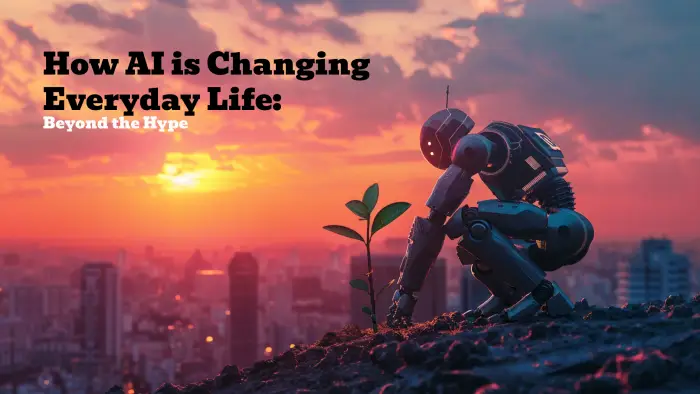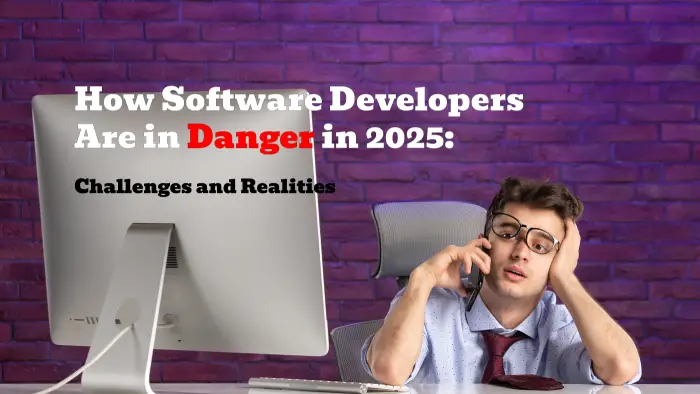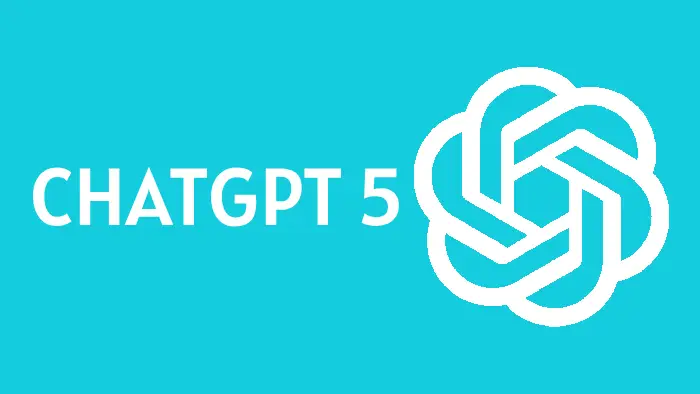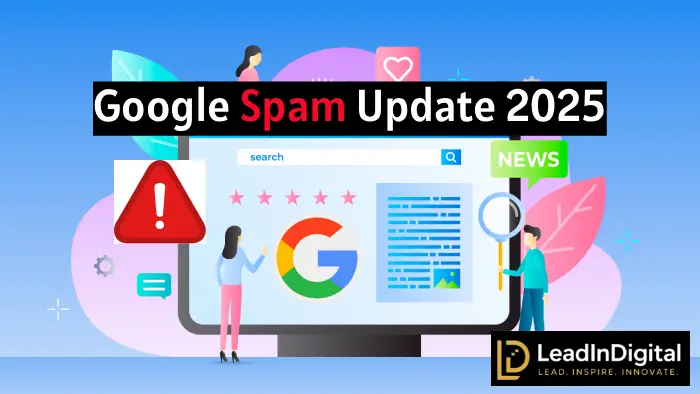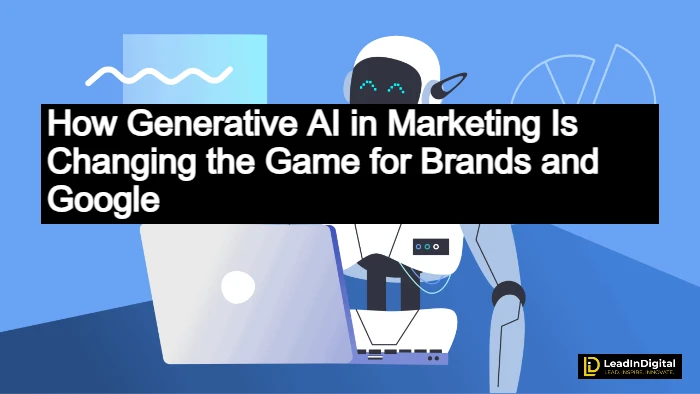
Content velocity has been unlocked by generative AI at a rate that was unimaginable just a few years ago. Marketers can quickly create blog drafts, click to create ad variations, or quickly create customized product descriptions for whole catalogs. Campaign creation is being accelerated by platforms such as ChatGPT, Jasper, Copy.ai, and branded internal AI tools.
However, this speed generates a tsunami of content. The number of published assets is increasing exponentially across all digital touchpoints, including social media, search, websites, and inboxes. AI has made it possible for a single marketer to do tasks that previously required a group of strategists, designers, and copywriters.
Competition and Market Saturation
As of September 2025, we're seeing a trend in a number of industries: ad fatigue, SEO saturation, and consumer disinterest in generic AI-generated messaging. The inherent advantage vanishes when everyone has access to the same potent instruments.
Imagine it as the nascent stages of social media promotion. Facebook Ads early adopters experienced amazing return on investment. Costs increased, consumer attention decreased, and only the most well-planned campaigns succeeded after everyone piled in. AI-driven content is currently showing the same trend.
Brands that combine AI efficiency with human creativity, narrative, and authenticity will emerge victorious in the future.
Effectiveness and Financial Savings
Efficiency is one of generative AI's main selling points for companies. Once taking weeks, creative processes now take hours. Testing a campaign can happen very quickly. Once significant financial burdens, translation and localization are now automated, allowing for worldwide reach.
This is especially advantageous for startups and small businesses. AI levels the playing field against larger businesses with sizable creative departments by democratizing production. For businesses, reducing operating expenses while expanding campaigns to reach wider audiences yields a return on investment.
Large Scale Hyper Personalization
Hyper-personalization is the superpower of generative AI. AI is capable of analyzing real-time demographic and behavioral data, in contrast to traditional segmentation, to produce distinctive, personalized experiences email subject lines, Twitter replies, recommendations, and headlines that are specific to a single person rather than a persona.
The "market of one" is upon us. For instance, by 2026, AI-powered e-commerce campaigns will dynamically change every aspect of a website's appearance and feel based on the user, including images, reviews, and even prices.
However, that customization raises the bar. Customers lose patience with generic advertisements or pointless messages as they become used to highly customized experiences.
Changing Expectations of Customers
Every brand's stakes are rising as AI driven personalization gains traction. Customers who have a smooth, well-curated experience with top AI powered platforms or retailers will expect the same level of service across all sectors, whether they are making appointments for medical care, online banking, or clothing shopping.
Nearly 60% of Gen Z and millennial consumers, according to surveys conducted in September 2025, anticipate AI powered personalization to be a standard aspect of their shopping experience. In addition to disengagement, failing to deliver could harm one's reputation.
Moral Aspects to Take into Account
Power carries responsibility. There are significant marketing concerns with generative AI:
Risks to privacy: Using customer data for personalization can quickly turn into monitoring.
Algorithmic bias: If left unchecked, AI models that replicate biases from their training data can pose ethical and reputational problems.
Over personalization: Rather than drawing in customers, creepy or intrusive customization runs the risk of turning them off.
Authenticity: At what point does beneficial personalization become deceptive?
Authorities are already taking action. Transparency regarding AI generated interactions will be required by the EU's AI Act, which is anticipated to go into effect by 2026. In a similar vein, debates concerning AI disclosures in advertising are heating up in the US. Brands need to get ready for more stringent regulations.
Changing Creative Positions
A common misperception is that creative jobs are being replaced by AI. The truth is more complex. Creative roles are being replaced by generative AI, not replaced.
Marketers are evolving into guides AI wranglers instead of manually creating each word and image. They are responsible for enhancing quality, guaranteeing brand consistency, curating AI outputs, and shaping prompts. The ability to be creative is not fading; rather, it is developing into innovation, critical thinking, and curation.
This is producing new, in-demand skills:
Quick engineering
Fluency of AI tools
Strategic supervision
Cross-disciplinary cooperation (combining linguistics, data, and design)
Marketers who can use AI while maintaining the human element of storytelling will be the most valuable in this new ecosystem.
Generative AI's Effect on Google Search
Generative AI is revolutionizing how consumers find content as well as how brands produce it. And Google is at the center of this change.
Answer Engine Optimization's (AEO) Ascent
Optimizing websites for keyword ranking has always been the focus of traditional SEO. However, as AI-powered search moves toward direct responses, ranking is no longer as important as Answer Engine Optimization (AEO).
Launched globally in 2024, Google's AI-powered overviews offer succinct, summarized explanations at the top of search results. As a result, users can access answers without clicking.
This alters the SEO strategy for brands. Being on page one is no longer sufficient. Training AI models to identify and reference your content as the authoritative source is the aim.
Searches with No Clicks
Zero-click searches are predicted to account for 25% of all search queries by 2026. That amounts to a quarter less natural traffic to websites. This is a severe setback for bloggers and publishers.
Consider this: in the days of SEO, being ranked #1 resulted in clicks. Now, if Google gives the complete answer, people might not visit your website even if you are ranked #1.
Because of this, marketers need to modify their measurement models. Brand mentions, SERP visibility, and inclusion in the AI summary might end up being just as important as traffic figures.
Highlighted Excerpts and AI Synopses
Google is using more and more structured content, such as FAQs, how-to manuals, and schema markup, to support AI overviews and featured snippets. Brands need to make sure their content is clear, organized, and AI-friendly.
For instance:
Brief, understandable responses to frequently asked questions should be included in the content.
Statistics and data must be correctly cited.
Google should be able to classify and surface the content quickly thanks to schema markup.
In the absence of this, even excellent content runs the risk of being lost in the AI-first SERP.
Google's stance on content generated by AI
Throughout 2024–2025, Google made it clear that content produced by AI is not automatically penalized. Quality, uniqueness, and conformity to Google's E-E-A-T framework which stands for Experience, Expertise, Authoritativeness, and Trustworthiness are what count.
Accordingly, marketers must incorporate the human element of value personal insights, first-hand knowledge, and distinctive case studies that AI by itself cannot replace, even though AI can be a very effective tool.
Recognizing Low Quality and Spam
Meanwhile, systems such as Google's SpamBrain are improving their ability to identify low value or manipulative mass AI content. It will backfire to oversaturate the internet with repetitive, automatically generated blogs.
SEO trend for September 2025: Search algorithm changes are now more sophisticated in assessing depth, uniqueness, and freshness. AI articles that are thin and repetitive frequently have poor indexation.
A New Guide to SEO
Marketers need to adopt a hybrid approach to SEO:
Content organization for AI overviews.
Put originality and depth ahead of keyword stuffing.
AI can be used to generate ideas and speed up drafts, but humans should still be used for editing, fact checking, and narrative.
Put your attention on establishing authorship credibility by connecting content to actual people, authorities, and identifiable voices.
The Human Touch
In the end, helpfulness is rewarded by Google. Human viewpoints are important. Content with stories, feelings, and real insights is valued by readers. AI cannot produce such content on a large scale.
In addition to ranking, brands that leverage this synergy humans for authenticity, AI for scalability will establish enduring trust.
Getting Around in the Future of Marketing
By September 2025, it will be evident that AI in marketing is a paradigm shift rather than a fad. Balance is needed on the road ahead.
Companies that reject AI tools risk losing their competitive edge, efficiency, and personalization.
Strike a balance between responsibility and innovation: Consumer resentment could result from over automation, ethical supervision is essential.
Invest in new skill sets: In the AI era, prompting, interpretation, fluency with AI, and brand storytelling are essential.
Accept cooperation rather than replacement: Human AI synergy, not competition, will produce the most effective campaigns.
The ultimate goal is to create a cooperative ecosystem where human creativity grows with AI's computational capacity, not to compete with machines.
Brands that scale effectively, maintain authenticity, adjust to Google's changing ecosystem, and maintain their foundation in customer trust will prosper.
